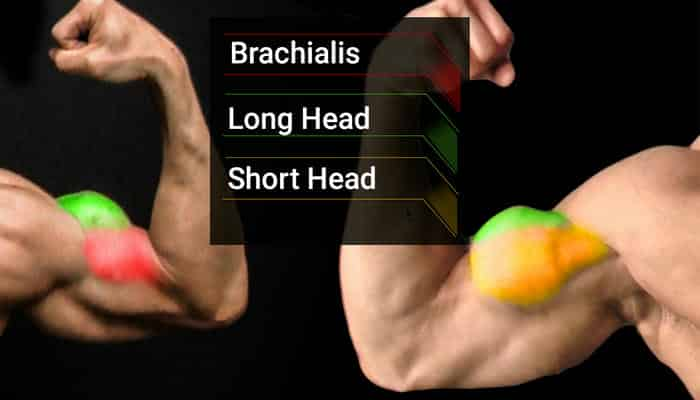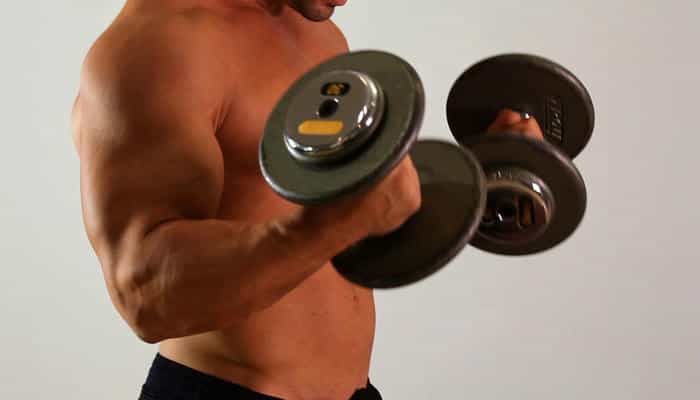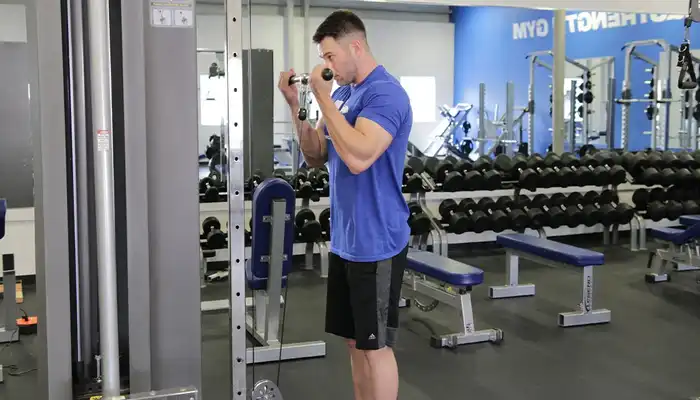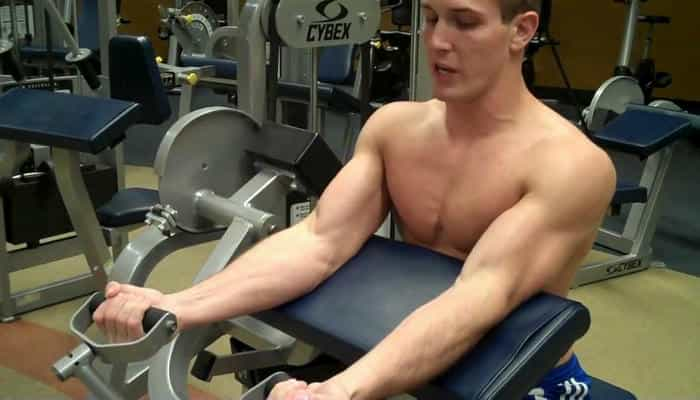If you’re chasing massive arms, mastering the bicep curl is non-negotiable! From curl dumbbells to barbell arm curls, and even cable bicep curls, these moves will pump your arms like crazy. In this guide, we’ll break down the best bicep exercises to help you grow those sleeve-busting guns!

Importance of bicep training
Bicep training plays a vital role in building stronger, well-defined arms. Exercises like the bicep curl, curl dumbbells, and barbell arm curl effectively target the biceps, promoting muscle size and strength.
Functionally, the biceps are crucial for holding objects in front of the body, such as when lifting groceries or carrying a bag. DB curls, cable bicep curls, and the bicep curl machine enhance muscle isolation and variety.
Incorporating reverse curls and preacher curls improves overall arm balance. A strong bicep routine not only boosts aesthetic appeal but also supports daily tasks, making your arms more functional and powerful.
You may also like: Fasted Cardio: What It Is, Benefits, and How It Helps Fat Loss
Role of bicep curl in arm development

The biceps consist of two heads: the long head and the short head. The long head attaches to the scapula, while the short head connects to the coracoid process of the scapula. Together, these heads form the muscle that plays a critical role in arm flexion and supination (rotating the palm upwards).
Bicep curls, including dumbbell bicep curls and barbell arm curls, primarily target these heads, especially during flexion. Movements like holding objects or lifting weights are supported by the strength of the biceps. Exercises like reverse curls and cable bicep curls help engage both heads for balanced arm development.
Types of Bicep Curl Exercises
Bicep curls are a fundamental exercise for arm development, and there are several variations that target the muscle differently. Each type of curl brings its own unique benefits for maximizing bicep size and strength. Below, we explore the key variations: dumbbell bicep curls, barbell bicep curls, cable bicep curls, and machine-based bicep curls.
Dumbbell Bicep Curl Exercises

Dumbbell curls are one of the most popular and effective ways to build bicep strength. By using free weights, they help improve stabilization and activate more muscle fibers compared to machines.
- Dumbbell Bicep Curl: This classic move targets the biceps through a full range of motion. With dumbbell bicep curls, you can focus on each arm individually, helping to correct muscle imbalances. The exercise helps increase bicep peak and overall size by allowing freedom of movement.
- Incline Bicep Curl: By performing the curl on an incline bench, you stretch the biceps more at the start of the movement, leading to a better contraction. This variation places more emphasis on the long head of the biceps, promoting balanced growth between both heads.
- Curling a Dumbbell: This refers to the basic act of curling a dumbbell but with specific focus on technique. Curling a dumbbell helps develop strength, and proper form ensures maximum muscle engagement without swinging, which maximizes bicep activation.
- Reverse Curls with Dumbbells: Unlike the regular curl, the reverse curl targets both the biceps and forearms by using an overhand grip. This variation helps improve forearm strength and enhances the development of the brachialis muscle, which lies beneath the biceps, pushing the biceps up for a more prominent appearance.
- Preacher Curl (with Dumbbells): The preacher curl isolates the biceps, minimizing body movement, which forces the arms to do all the work. By performing this with dumbbells, you get an extra range of motion, allowing for a deeper stretch at the bottom of the curl. This exercise helps build the lower portion of the bicep.
Barbell Bicep Curl Exercises

The barbell curl allows for heavier lifting and focuses on developing both heads of the biceps through more resistance. Barbell curls can be done with variations in grip to target different parts of the muscle.
- Bicep Curl Barbell: A classic exercise, the bicep curl barbell lets you lift heavier weights than with dumbbells, promoting greater muscle hypertrophy. The straight bar creates consistent resistance, helping to maximize overall bicep growth. Focus on controlled movements to avoid momentum, which can limit muscle activation.
- Bar Bell Curl: Similar to the bicep curl barbell, the bar bell curl is performed with a barbell but can incorporate different grip positions (wide or narrow) to target specific parts of the biceps. This variation offers a greater overload of weight, which is essential for building size and strength.
- Barbell Arm Curl: This variation emphasizes strict form with the elbows close to the torso, allowing for full bicep engagement. The barbell arm curl allows you to focus entirely on the biceps without involving much of the back or shoulders.
- Reverse Curls (with Barbell): Reverse curls (with barbell) work the brachialis and forearms more than traditional curls. By flipping the grip to an overhand position, this variation strengthens both the biceps and forearms, improving arm aesthetics and strength, which also benefits other lifts like deadlifts and rows.
Cable Bicep Curl Exercises

Cable curls provide constant tension throughout the range of motion, allowing for consistent muscle activation. The cable setup also allows for a variety of grip options and angles.
- Cable Bicep Curl: The cable bicep curl maintains tension on the muscles throughout the movement, making it an excellent option for continuous engagement. This variation allows for precise control over the range of motion and can help refine form for better muscle development.
- Cable Arm Curl: The cable arm curl is a versatile exercise that lets you change the grip (overhand, underhand, or neutral), targeting the biceps from different angles. This exercise provides excellent isolation and muscle activation, especially in the mid-to-lower range of the bicep.
- Cable Dumbbell Curls: Although dumbbell curls are typically performed with free weights, using a cable machine with a dumbbell attachment provides constant tension and a different angle of resistance. This unique variation helps target the biceps in a way that dumbbells alone cannot.
Machine-Based Bicep Curls

Machine-based curls offer stability and focus, removing the need for balancing the weights. These exercises are perfect for beginners or those looking to isolate the biceps with less involvement from other muscle groups.
- Bicep Curl Machine: The bicep curl machine isolates the biceps, ensuring that no other muscle groups interfere during the movement. This variation provides a controlled environment to perform curls with optimal form, making it a great option for focusing purely on bicep growth without the need for stabilization.
You may also like: Best Lat Pulldown Variations for a Stronger Back
Common Mistakes in Bicep Exercises
Bicep exercises like the bicep curl are essential for arm growth, but common mistakes can limit progress and increase the risk of injury. Proper form and technique are critical for getting the most out of your bicep exercises.
Incorrect Form in Bicep Curls
Form is everything. Whether you’re doing a dumbbell bicep curl, bicep curl barbell, or cable bicep curl, improper form—such as flared elbows, swinging weights, or leaning back—reduces bicep activation. Keep your elbows close to your sides and avoid using momentum. Exercises like the barbell arm curl and db curls should be performed in a slow, controlled motion.
Overusing Momentum
Many lifters cheat reps by swinging the weight or using their back to lift, especially during heavy bar bell curls or fast cable dumbbell curls. This shifts tension away from the biceps and onto other muscles, limiting growth and increasing injury risk. Focus on lifting with the biceps only.
Neglecting Reverse Curls and Variation Exercises
Relying only on traditional bicep curls can leave the forearms and brachialis underdeveloped. Variations like reverse curls, incline bicep curls, preacher curls, and curling a dumbbell target different muscle fibers for balanced development. Including a mix of db bicep exercises, barbell curls, and cable arm curls builds complete, functional arms.
Poor Wrist Position
Wrist alignment is often overlooked but essential. Bending your wrists during curls—especially during bicep curl dumbbell, cable arm curl, or barbell arm curl—can lead to strain and reduced bicep engagement. Keep your wrists neutral and strong to maintain proper tension on the muscle and reduce joint stress.
You may also like: The Ultimate Guide to Bench Press: Techniques, Variations, and Benefits
FAQs (Frequently Asked Questions)
To perform a bicep curl, hold dumbbells or a barbell bicep curl bar. Keep elbows close, palms forward. Curl the weight up, squeezing your biceps. Lower slowly. Maintain proper bicep curl form and avoid swinging. You can try seated bicep curl, standing bicep curl, or cable bicep curl.
How to bicep curl?
Use dumbbell bicep curls, barbell curls, or a bicep curl machine. Grip weights, elbows tight, palms forward. Curl the weights up towards your shoulders. Lower with control. Variations include hammer bicep curl, incline bicep curl, and preacher curl for targeted muscle engagement. Focus on correct bicep curl form.
A bicep curl is a strength-training exercise targeting biceps muscles. It involves lifting dumbbells, a barbell, or using a cable curl machine by flexing the elbows. Variations like hammer curls and reverse curls work different bicep muscles. Maintain proper bicep curl form for optimal results and safety.
Start with curl dumbbells, barbell arm curl, or cable bicep curl. Keep elbows by your sides, curl weights upward. Lower slowly. Include seated bicep curl or incline bicep curl for variety. Focus on proper bicep curl form to avoid injury and maximize bicep muscles worked during the exercise.
A bicep curl bar, commonly called an EZ curl bar or barbell bicep curl, typically weighs between 10-15 kilograms (22-33 pounds). Some bicep curl bars weigh more, especially commercial gym versions. Always check before lifting, especially for preacher curls or bar bell curls, to maintain form.
Adjust the bicep curl machine seat and arm pad. Grasp the handles, keeping elbows aligned. Curl the handles up, contracting biceps muscles, then lower slowly. It isolates the biceps like a preacher curl. Variations include reverse curls and cable bicep curls for strength and muscle engagement.
A hammer curl uses a neutral grip, emphasizing the brachialis and brachioradialis, while a bicep curl uses a supinated grip, targeting biceps brachii. Both improve fitness biceps exercises. Try dumbbell bicep curl, cable bicep curl, and hammer bicep curl variations for complete arm development and strength.
The preacher curl isolates the biceps brachii, especially the lower biceps near the elbow. This bicep exercise limits momentum, increasing tension. It’s often performed with barbell bicep curl bars, dumbbells, or a preacher curl machine. Include reverse curls and hammer curls for balanced biceps training.
The bicep curl is a pull exercise. It involves flexing the elbow joint and pulling the weight towards the body. Variations include dumbbell bicep curl, barbell arm curl, cable arm curl, and reverse curls. Add seated bicep curls and hammer arm curls for diverse biceps exercises.
A good bicep curl weight allows 8-12 reps with correct bicep curl form. Beginners may start with 5-10 kg dumbbells. Progress to barbell bicep curls or cable curls. Adjust according to exercise type—incline bicep curl, preacher curl, or reverse curls need varying resistance for proper training.
For a proper bicep curl, hold dumbbells or a barbell curl bar, keep elbows tight, curl towards shoulders. Lower under control. Avoid swinging. Try incline bicep curls, hammer bicep curls, and cable bicep curls. Focus on bicep muscles worked and maintain perfect bicep curl form throughout.
The bicep curl is an isolation strength training exercise targeting biceps muscles. It focuses solely on elbow flexion, unlike compound moves. Perform with curl dumbbells, barbell arm curl, cable curls, or bicep curl machine. Variations like preacher curls and hammer curls enhance muscle activation.
The hammer curl primarily targets the brachialis and brachioradialis, muscles beneath and alongside the biceps brachii. It thickens the arm, improving fitness biceps exercises. Perform using dumbbells, cable curls, or trx bicep curls. Mix with reverse curls and preacher curls for complete upper-arm strength.
Use dumbbells, a barbell bicep curl, or cable bicep curl. Stand tall, elbows close, palms up. Curl the weight, squeeze biceps, and lower slowly. Focus on strict bicep curl form, avoiding momentum. Variations include seated bicep curl, incline bicep curl, and hammer bicep curls.
Set the bicep curl machine seat and arm pad height. Grip handles, elbows aligned. Curl upward, contracting biceps muscles. Lower slowly. It’s ideal for strict bicep exercises like preacher curls. Combine with cable bicep curl and hammer bicep curl for complete fitness biceps training.
A bicep curl is a pull exercise, involving elbow flexion. You pull dumbbells, barbell curl bars, or cable arm curls towards your shoulders. Use variations like preacher curl, seated bicep curl, and hammer curls. Focus on maintaining strict bicep curl form to target biceps muscles effectively.
The bicep curl follows an ascending strength curve, with increasing tension through the movement. The hardest point is mid-curl. This applies to barbell curls, dumbbell bicep curls, preacher curls, and cable curls. Mixing seated bicep curls and hammer curls helps manage resistance throughout the range.
A bicep curl uses a supinated grip, targeting the biceps brachii. A hammer curl uses a neutral grip, focusing on brachialis and brachioradialis. Both improve fitness biceps exercises. Include barbell bicep curls, dumbbell bicep curls, and preacher curls in your routine for balanced biceps muscles development.
A bicep curl bar (EZ curl bar) typically weighs 10-15 kilograms (22-33 pounds). Heavier barbell bicep curl bars exist for advanced training. Use it for preacher curls, reverse curls, and barbell arm curls. Confirm weight before lifting, especially for strict bicep exercises requiring controlled movement.
A bicep curl is a third-class lever. The effort is applied between the fulcrum (elbow) and the load (weight). This applies in dumbbell curls, barbell bicep curls, preacher curls, and cable bicep curls. Third-class levers favor speed and range, making bicep exercises efficient and controlled.

